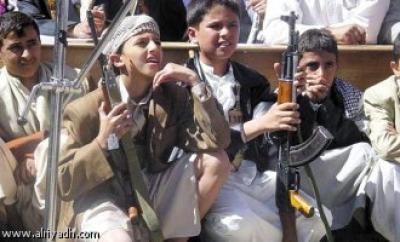Report claims 28 million children living in countries at war are now in need of humanitarian help as families struggle to cope amid the chaos and violence
The Guardian
Karen McVeigh
11 September, 2017
The number of children recruited to fight in conflicts across the Middle East and North Africa has more than doubled in a year, UN analysis has found. The huge increase in child soldiers in Syria, Yemen, Iraq and other countries follows years of ongoing violence, displacement and a lack of basic services, which has reduced the coping mechanisms of families, according to Unicef.
Almost one in five children across the region – 28 million in all – now need immediate humanitarian assistance. More than 90% of these children live in countries affected by conflict, and in some cases families are sending their children to fight.
“With no end in sight to these conflicts and with families’ dwindling financial resources, many have no choice but to send their children to work or marry their daughters early,” said Geert Cappelaere, Unicef’s regional director. “The number of children affiliated with the fighting has more than doubled.”
The agency said in the past it had witnessed children working as porters, guards or paramedics, but it was now seeing them take on more active roles, carrying guns, manning checkpoints and being trained as paid soldiers. The number of children actively recruited into fighting rose from 576 in 2014 to 1,168 in 2015, according to verified UN figures.
The situation in Yemen was particularly grave, with a fivefold increase in children recruited into armed conflict in 2015 compared with the previous year. Such numbers were likely to be an underestimate, Unicef said. Children were also being recruited as soldiers in Sudan and Libya.
Years of ongoing violence, displacement and a lack of basic services have hit children hardest and threaten to reverse child development gains, said Unicef. “Conflict continues to rob millions of girls and boys of their childhood,” Cappelaere said. “Decades of progress are at a risk of being reversed across the Middle East and North Africa.”
Civilian infrastructure – including hospitals and energy, water and sanitation facilities – has come under attack in countries including Yemen, Syria and Iraq. Millions of families have been forced to flee their homes, some of them repeatedly, and under fire, the agency said.
Last week, the UN reported that 1,700 children, some as young as 10, had been recruited to fight in the three-year conflict in Yemen. The deteriorating situation in the country is now the worst humanitarian crisis in the world, with almost 18.8 million people in need of aid and 7 million on the brink of famine.
More than half of the country’s health facilities are out of service, water facilities have been destroyed and more than 15 million children are in need of water and sanitation facilities. The country is in the grip of the world’s worst cholera outbreak, with more than 610,000 suspected cases to date. More than 2,000 people have died from the highly contagious but curable bacterial infection since April this year, with thousands of new cases every day.
Inside Syria and in countries hosting refugees, such as Lebanon and Jordan, about 12 million Syrian children require humanitarian assistance, Unicef found. An estimated two million children live in hard to reach or besieged areas in Syria, which have received limited humanitarian assistance over the years.
In Iraq, more than 5 million children are in need of assistance as heavy fighting intensified, recently in Tel Afar and in Mosul. They need food, shelter and education.
In the Gaza strip, an ongoing electricity crisis has reduced access to water by 30%. Cases of diarrhoea in children have doubled in three months, the UN agency said.
“Children in the Middle East and North Africa region have undergone unprecedented levels of violence and witnessed horrors that no one should witness. If violence and wars continue, the consequences – not only for the region but for the world as a whole – will be dire. World leaders must do much more to put an end to violence for the sake of boys and girls and their future,” said Cappelaere.
 Lebanese Ministry of Information
Lebanese Ministry of Information



